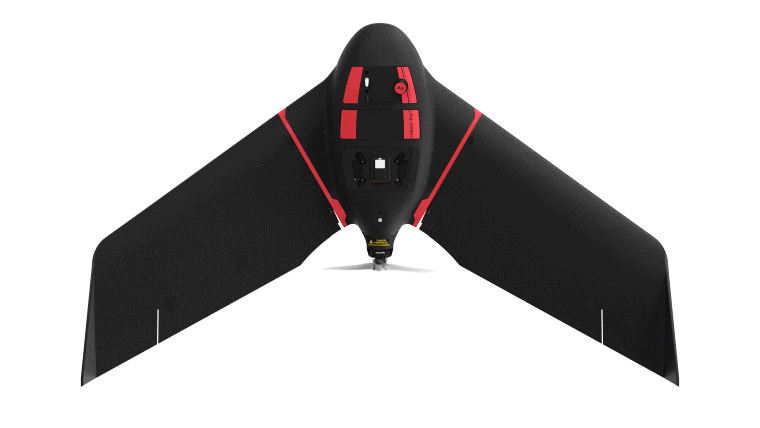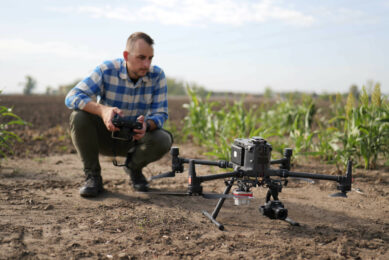Getting the most out of drones in agriculture

When used correctly, unmanned aerial vehicles (UAVs) can help agriculture professionals optimise operations, maximise yield and profitability. But are you getting the most out of your drone?
For agriculture professionals who have invested in drone technology, it’s no secret that they can bring significant benefits to the sector. Fixed-wing drones, in particular, are an ideal solution for surveying large areas quickly and efficiently – making them an essential tool across the industry. When used correctly, unmanned aerial vehicles (UAVs) can help agriculture professionals optimise operations, maximise yield and profitability. But are you getting the most out of your drone? Here, we explore how farmers and agronomists can take their drones further and reap the benefits.
Multi-purpose benefits
Drones have multiple uses and benefits, helping farmers in several operations before, during and after the growing season by gathering in-demand insights quickly and efficiently in a non-destructive way. But how can drones be used to their full potential?
One area that could provide opportunities is water management. Irrigation can help farmers improve yield and crop quality but uses large amounts of water, so can be an ineffective process in areas where water is scarce. On the other hand, surplus water like heavy rain can lead to erosion and leaching, which can affect soil conservation and nutrient availability. With the industry looking to achieve an important balance between water demand and availability, water management is becoming a much higher priority.
Drones can help optimise soil management, and develop strategic plans for integrated pest, disease, and weed management
Using drones to generate high accuracy digital elevation models (DEMs) can help to address these issues, by guiding field operations, planting orientation and other water management and soil conservation strategies. For example, UAVs with multispectral or thermal sensors can identify which parts of a field are dry or need improvements. Similarly, drones can help optimise soil management, and develop strategic plans for integrated pest, disease, and weed management, including variable rate prescription maps for treatment. Controlling the focus of the application helps the environment, reduces pollution and optimises resources.
Text continues underneath image

Enhanced crop monitoring
Drones are also crucial to ensure a good quality of planting and sowing, which are the most important operations for any type of crop. However, extensive fields and low crop monitoring efficiency present significant challenges for farmers and agronomists – crops demand a significant amount of area, effort, time and investment. There is therefore an opportunity to use UAVs to help ensure fields are free of competition, such as weeds, and verify the quality of the sowing or planting by counting the stand and checking plant health and development.
To achieve strong yield results, close monitoring and smart allocation of resources – which can be implemented without a significant time or effort investment – are required. Drones help to assess crop development and health, indicating the areas which need more – or less – inputs, such as nutrients, pest control, operations, for better efficiency and an improved return of investment.
Using a drone in this context brings distinct quantitative benefits; for example, agriculture professionals can outline clear savings by optimising inputs, like fertilisers and pesticides or herbicides. Beyond financial incentives, UAVs also allow farmers to detect crop stress early and target specific areas before selecting the correct treatment.
Streamlined operations with drones
Since every farm – and field within each farm – has greater variability and multiple purposes, any monitoring tool needs to be adaptable for a variety of conditions and applications. Mapping drones give farmers more flexibility to collect data according to their needs or the needs of the crop. For instance, if users prefer to fly in the morning, they can review the data soon afterward or upload the data online for a more in-depth analysis, which typically takes a few hours to process.
With UAVs, there is also no requirement for farmers and agronomists to have any prior experience before operating. But with each flight, users will better understand how plants are affected by each event, or how each event is reflected in the data, to determine patterns and behaviors. This means they are better equipped to know what to expect when going to the field – potentially interpreting the information more quickly. For example, by checking the distribution pattern in the field or being able to see trends in a field in chronological order.
While using drones does not mean producers have to completely switch to precision agriculture, they can implement certain practices from it
Indeed, the qualitative benefits for farmers and agronomists improve with experience. Users can become more convinced by the reliability of the data, helping to build confidence in decision making – based on facts and numbers of total area, rather than relying on sampling or guesses.
Precision agriculture, for example, is a growing area, with the global market now estimated to reach $ 43.4 billion by 2025. These practices use global positioning system (GPS) technology, together with geographic information system (GIS) tools, to provide precise monitoring and mapping. While using drones does not mean producers have to completely switch to precision agriculture, they can implement certain practices from it, depending on their needs.
Farmers can also build up a better understanding of their property using drones. Regular flights can help monitor field topography, and identify areas that are prone to erosion, leaching, pests or diseases, allowing farmers to make necessary improvements. Which areas have the greatest and lowest production potential? Real-time plant health data can easily provide answers to these questions, and so much more. Properly managing zones using a UAV is another effective way to optimise yield and improve ROI, while saving labor and fuel. Ultimately, improved productivity and timely decisions can also significantly help reduce losses.
Text continues underneath image

Raising the bar on drone maintenance
Beyond applications, ensuring drones are being properly maintained can further help users to get the most out of their technology – by maximising safety and effectiveness. Fixed-wing mapping drones are built with considerably advanced tools which seamlessly integrate both physical and electronic technologies. But like any other piece of precision equipment, they require regular maintenance and service to continue reaping their rewards long-term.
senseFly recommends that a single inspection is conducted by an authorised distributor every 100 hours of flight time to ensure proper performance. This allows users to schedule maintenance at their convenience.
Having the right resources and training can also significantly help drone users get the most out of their equipment
Given the importance of regular maintenance, farmers and agronomists must ask themselves if there are any updates in software or user experience that could enhance drone use? Drone manufacturers, such as senseFly, continuously make updates and improvements, or periodic software enhancements that improve operation and the user experience. In general, professional drones cannot be serviced by users – a trained technician is needed to ensure quality and performance are maintained to high standards.
Having the right resources and training can also significantly help drone users get the most out of their equipment. Drone manufacturers, for example, often provide educational material to help enhance knowledge, such as manuals, online training, webinars and technical articles. Scientific articles can also indicate best farming practices and specific applications for every type of crop, to give users the confidence to expand their operations.
University extensions also have growing libraries of local agronomic knowledge, many of which now include information on integrating drones into agriculture workflows. Similarly, being part of a drone owner community online can further enhance operations, by allowing users to exchange useful information and discover new application areas – ideal for farmers who prefer the tried-and-tested approach.
Taking drones further
Drones offer significant opportunities for farmers and agronomists to explore the full potential of the benefits they can bring to crop production. As well as investing time and resources into furthering drone technology and proper maintenance, taking the time to explore options available through your local university extension or delve into an online drone community can be very beneficial, allowing you to discover new applications and swap best practice information.
Drones have multiple applications in agricultural production but as an evolving technology, new uses continue to emerge, so watch this space – there will be plenty more exciting developments in the coming years.
Join 17,000+ subscribers
Subscribe to our newsletter to stay updated about all the need-to-know content in the agricultural sector, two times a week.



